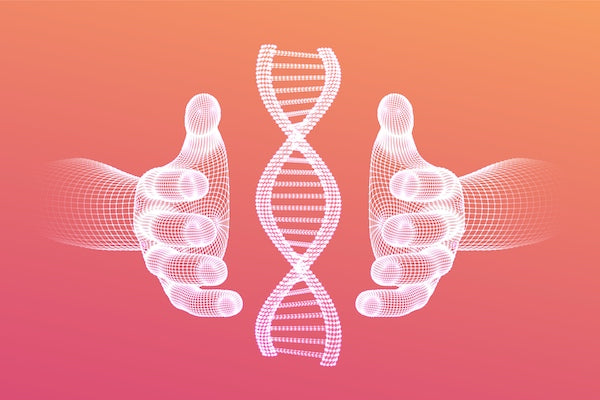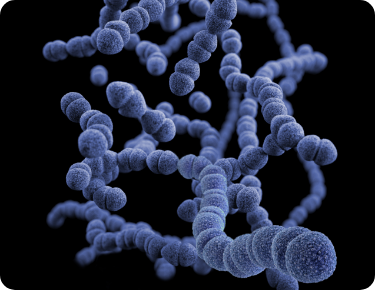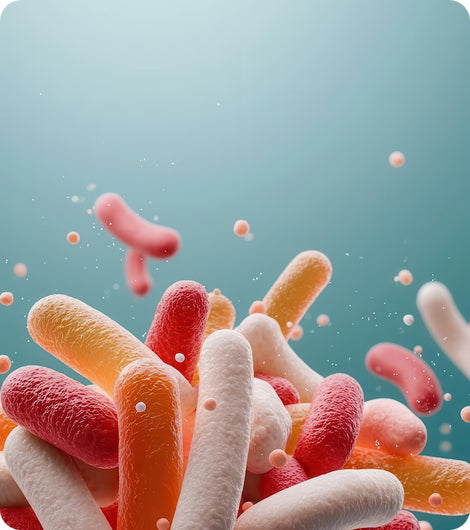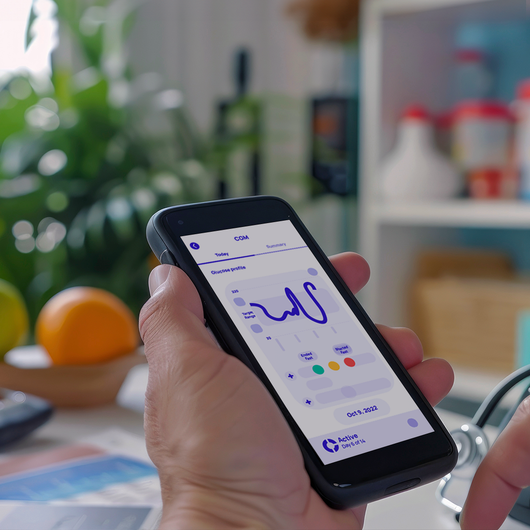This is a summary of the webinar on "Reversing Hypertension: Putting your Genetics and Gut Biome to work" conducted by Digbi Health in partnership with Dr. Cynthia Thiak on September 2, 2020.
How your genes and gut bacteria play a critical role in body chemistry to impact obesity and weight-related chronic illnesses, including hypertension
Heart-Gut Axis
There is a complex interplay between our gut microbiota, their metabolites, and the development and progression of cardiovascular diseases referred to as the “Heart-Gut Axis.”
The metabolic potential of gut microbiota to impact various systems in our body lies in the byproducts of their metabolism in response to various environmental stimuli, including what we eat. Our gut microbiome generates bioactive metabolites that can enter the bloodstream and impact us through various biochemical pathways.
Unwelcome, disruptive changes in gut microbiota composition, known as “gut dysbiosis,” have been linked to a variety of health issues such as atherosclerosis, hypertension, heart failure, chronic kidney disease, obesity, and type 2 diabetes.
22% of Digbi Health program participants suffer from hypertension
Causes of hypertension
- Poor diet
- Alcohol consumption
- Lack of exercise
- Sleep issues
- High salt intake
- Physical and emotional stress
Predisposing factors:
- Genetics- the likelihood of inheriting hypertension
- Diabetes
- Obesity
- Inflammation
- Gut biome dysbiosis
- Diversity of Gut biome
- Leaky gut
The Digbi Cares Program: Managing and reversing hypertension and various obesity-related comorbidities through precision digital care
At Digbi Health, we manage Obesity and gut biome dysbiosis in addition to assessing your genetic profile for the tendency towards hypertension and other chronic diseases. Our personalized wellness and nutrition plans are based upon these assessments.
It is the first AI-driven, precision digital care program for obesity and related inflammatory comorbidities. It is a unique solution and one that is proving to be a game-changer in personalized medicine.
It is personalized based on:
- Gut microbiome
- Genetics
- Blood metabolites
- Lifestyle factors
Bioindividuality and the need for personalized medicine
Humans have 23 chromosomes that encode 3 billion gene letters. These letters are protein molecules, which are like an instruction manual for the biochemical processes in our body. 95% of the genetic material is common to humans, but only a portion of our genetic material, 1.3 million letters, is what makes us unique. An example of this uniqueness is what we can eat without gaining weight. For instance, one person may lose weight snacking on almonds, and another may not.
Influence of our genetic material on our health, metabolism, and disease risk
Our own genetic material has a meager 10% influence on our health, metabolism, and risk for certain illnesses. Trillions of gut microbes exhibit a far greater genetic diversity compared to our own genome, almost 90%.
Gut bacteria have co-evolved with us for thousands of years. They assess every organism- whether friend or foe and teach the immune system to differentiate between the two. They also generate compounds that function as chemical messengers e.g., serotonin, previously thought to be created in the brain.
Moreover, the integrity of the gut wall is critical to our gut health. If it is compromised, it opens up the possibility for harmful products and bacteria to enter the bloodstream.
What is a healthy gut, and what is gut dysbiosis?
A healthy, well-functioning gut has the highest diversity of gut bacteria, and each type has a role to play.
Disruptors of a healthy gut bacterial balance-
- Poor sleep patterns
- Taking antibiotics
- Stress
A disturbed gut ecosystem can result in-
- Insulin resistance
- Brain fog
- Gut inflammation
- Hypothyroidism
Concept of biodiversity as applied to the gut biome
b>An ecosystem is made up of various species that coexist in harmony and maintain a diverse biosphere, e.g., the Amazon rainforest.
Keystone species are highly important species within the ecosystem such that if they cease to exist, it upsets the balance of the ecosystem.
In our gut, Bacteroides thetaiotaomicron and Bifidobacterium adolescentis are the keystone species.
Characteristics of keystone species within gut bacteria:
- They tend to be fewer in number compared to other species
- Tend to align themselves along the gut wall/mucosa and protect its integrity
- Their loss can result in a leaky gut, inflammation, and other conditions
How do we ensure that the gut biome has a diverse mix of bacteria?
By including prebiotics and probiotics in our diet.
Prebiotics
Prebiotics are indigestible complex sugars (oligosaccharides and polysaccharides—fructooligosaccharides or galactooligosaccharides (GOS)—) that promote the growth or activity (or both) of bacteria that impart a health benefit for the host.
Prebiotics “feed” the intestinal microbiota. Their byproducts, short-chain fatty acid (SCFAs), are released into blood circulation. As a result, they affect not only the gastrointestinal tract but also other, more distant organs.
Introduce fiber to “feed them right.” Fiber is the only food that is not digested all the way and acts as a substrate for gut bacteria. Gut bacteria digest fiber and produce metabolites critical to gut health.
Probiotics
Probiotics are live or attenuated microorganisms, usually bacteria or yeast, that are beneficial to the host’s digestive system. They alter gut microbial communities in a manner that ultimately delivers a health benefit to the host. Probiotics are found in fermented foods.
The average American diet is greatly deficient in fiber:
Current consumption rates are around 15g per 1000 cal - about half of the recommended fiber intake of 25-30g a day. Only 5% of Americans meet the daily fiber requirement. Paleobotanical studies show that cavemen ate 120g of fiber a day. In terms of genetic material, we have not changed that much from cavemen; therefore, we need to consume more fiber.
How these foods benefit the body:
- Improve energy metabolism, boost energy
- Increase mucin (mucus layer)
- Decrease the pH/ maintain correct pH within the intestine and prevent leaky gut
- Reduce inflammation
About salt intake and hypertension
Decreasing salt intake is one of the first things prescribed to bring hypertension under control, but the strategy is effective in only 50% of the population.
DNA analysis is done at Digbi to assess whether you are a good candidate for this method or not. Hypertension boils down to the rigidity of arteries. If arteries are supple, the heart has to put in less effort to pump blood through. If they are rigid, it has to work harder, possibly resulting in hypertension. Decreasing sodium/salt intake helps maintain the right fluid levels and reduces hypertension in some cases.
Similarly, individuals with a certain genetic profile will have lower blood pressure in response to high riboflavin (vitamin B2) intake.
Our analysis also extends to gut bacteria population balance and diversity assessment, including that of keystone species.
Based on that, we create the nutrition profile of your personal superfoods and foods to avoid. In addition, you can look through the recipe finder to find recipes to fit your nutrition profile and lifestyle.
Dr. Cynthia Thaik’s section: Holistic approach to managing hypertension
In this day and age, the most common diseases like diabetes, heart disease, respiratory illnesses, and cancer are also among the most easily preventable.
It is important to see how all disease states are interrelated and focus on the root cause, not just symptoms or isolated systems.
Inflammation is the underlying cause of many chronic illnesses, including heart disease.
However, cholesterol is often implicated. Endothelial dysfunction stemming from inflammation leads to neuromuscular and cardiovascular disease. Cholesterol is like an innocent bystander and not the main culprit. It patches up areas of injury along the miles of the endothelium within our body, like a band-aid.
If left untreated, Hypertension is a “silent killer” and constantly affects multiple systems within the body.
It is possible to lower your high numbers and reverse Hypertension with a holistic approach.
Measurable parameters for arterial compliance
EndoPAT is a microvascular testing procedure to check on the pliability of blood vessels. It can reveal how treatment interventions affect blood vessels’ ability to be supple and ameliorate high blood pressure conditions.
Arterial compliance is measured through MaxPulse. Autonomic regulation and stress resilience is also assessed.
Epigenetics and Nutrigenetics
Epigenetics are factors outside of genetic influences: lifestyle, emotional health, exercise, nutritional factors that influence our health beyond any predispositions that genetics may confer.
Nutrigenetics studies the ability of certain foods to turn on certain genes (or suppress them) that impact our health.
Understanding that our genetic material is only 10% human is changing how we view ourselves as living organisms. The gut microbiome is a major influencer in our states of health and well being.
Poor diet is a major risk factor for various diseases and thus a major contributor to mortality. Poor dietary choices not only impact physical health through metabolism, digestion, and hormonal systems, but the loop extends to the brain as well, influencing our moods and mental health, plus the choices we make.
Q&A
-
Hypertension runs in my family. What can someone who has inherited hypertension do to reverse it?
A holistic approach that takes into account your genetic profile, your responsiveness to reduced sodium intake and the efficacy of vitamin B2 supplementation can be effective in reversing hypertension. It can be coupled with a program such as Digbi Cares, which provides personalized nutrition solutions to improve gut bacterial health and digital tracking support. It is quite effective in reducing comorbidities and inflammatory chronic diseases. -
What is treatment-resistant hypertension? How can it be treated?
The term applies to about 20% of those who suffer from hypertension that cannot be treated through medication or a cocktail of anti-hypertensive medications. It can be treated through lifestyle and dietary modifications. -
What is the name of Dr. Cynthia Thaik’s book?
“Your Vibrant Heart: Restoring Health, Strength and Spirit From The Body’s Core.” -
How can I sign up (my husband/family member) for the Digbi Health Program?
You can sign up at this link if your insurance is covered by a large health plan in California: bit.ly/digbi-bsc. If you do not have coverage, you can click this link: bit.ly/digbi-cares and use the code health35 to get a $40 discount. -
Can one just take a probiotic pill to balance gut bacterial species and reverse hypertension?
It is not enough to take a probiotic and seed your gut with beneficial bacteria. You also have to continue along lifestyle and nutrition guidelines to create the right environment to help them thrive and bring about beneficial changes.















